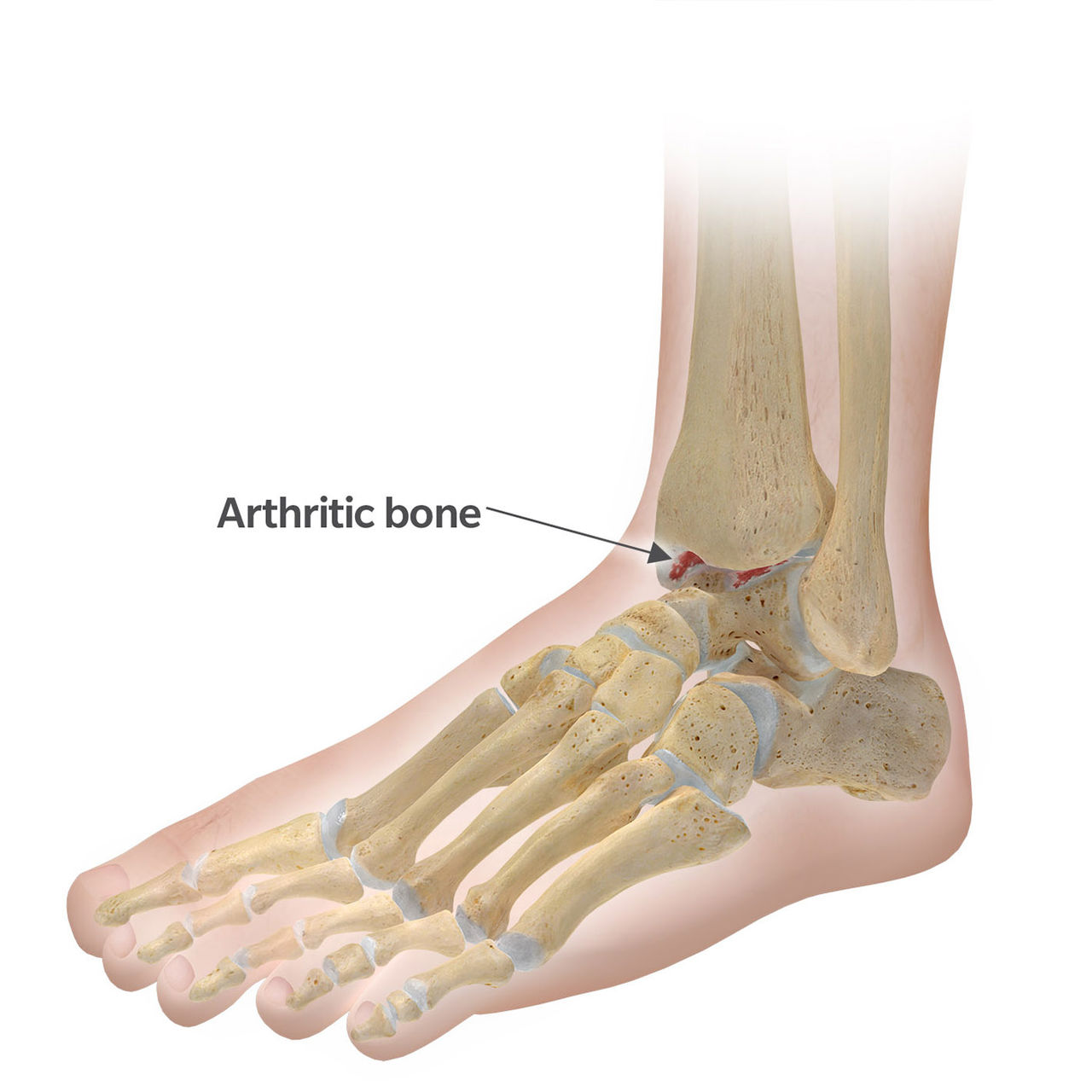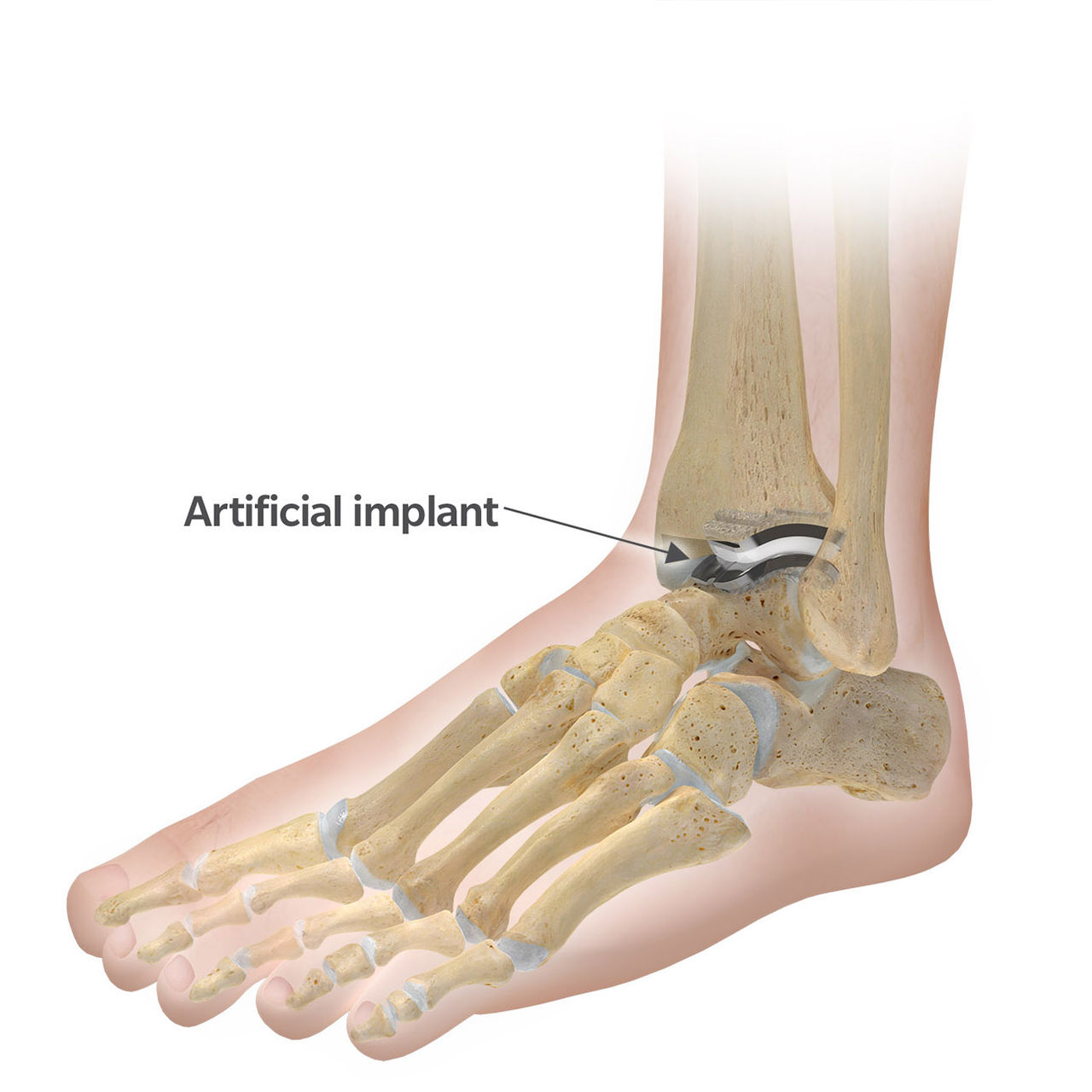If you experience ankle pain due to arthritis, you’re not alone. Depending on the severity of your arthritis and your pain, treatment options can range from conservative measures to surgical interventions. Nonsurgical treatments generally have better results with early to mild stage ankle arthritis, with the overall goal of treatment to relieve pain. If your doctor recommends surgery, a treatment plan will likely be based on the degree of the ankle arthritis. Be sure to consult your doctor to discuss the best treatment plan for you.
Conservative (nonsurgical) treatments
1. Lifestyle changes. Performing low-impact activities instead of high-impact activities as well as losing weight can help limit the amount of pressure, force and stress on the ankle joint which may relieve symptoms and pain. In addition, it may slow the progression of the arthritis.
2. Orthotics, bracing and ankle foot orthosis (AFO). Wearing a supportive device may reduce pain and symptoms. Orthotics may help redistribute our weight on the foot and ankle, reducing the stress on the arthritic ankle. An assistive device, such as a brace or AFO, supports the area and limits the motion of the ankle. An AFO helps hold the ankle in a more corrected position. Rocker bottom shoes can also be helpful.
3. Physical therapy. Physical therapy can help increase strength, range of motion, and flexibility of the ankle in order to reduce stress on the joint. Ask your doctor for specific PT recommendations given your personal circumstances.
4. Medication and ice. Anti-inflammatories, pain medicine, and/or ice (used as directed by your doctor) may help reduce inflammation, swelling, and pain of the ankle joint.
5. Injections. This is where medication is injected directly into the ankle joint to relieve pain and swelling of the joint. The relief of symptoms can typically last between 3 to 6 months.
Surgical treatments
You should discuss all of the potential benefits and risks of these procedures with an orthopedic surgeon ('bone and joint' doctor).
1. Arthroscopy. This type of surgery can be beneficial in early stage ankle arthritis. During an ankle arthroscopy, a small camera is inserted into the ankle joint and shavers are used to clean the joint and remove bone spurs, debris, and damaged pieces of cartilage. Arthroscopy is typically less effective in more severe cases of ankle arthritis.
2. Arthrodiastatis. This procedure is less common that the others noted here. It involves pulling the ankle joint apart and holding the bones apart with an external fixation device. The goal is to allow the body to naturally heal and repair the cartilage and joint. The external fixation is typically worn for approximately 3 months.
4. Arthrodesis. In end-stage ankle arthritis, an arthrodesis has generally been considered the "gold-standard". An arthrodesis involves fusing the joint together. This will eliminate motion of the joint, therefore eliminating pain of the area. Due to the lack of motion, patients may need to wear a brace or certain shoe gear following the procedure.
5. Total ankle replacement. This procedure involves resurfacing the ankle joint. This simply means that the arthritic portions of the bone will be removed and replaced with artificial implants. A total ankle replacement should allow for restored motion and function of the ankle joint, along with reduction or elimination of pain.
 Arthritic Ankle
Arthritic Ankle
 Ankle Replacement
Ankle Replacement



